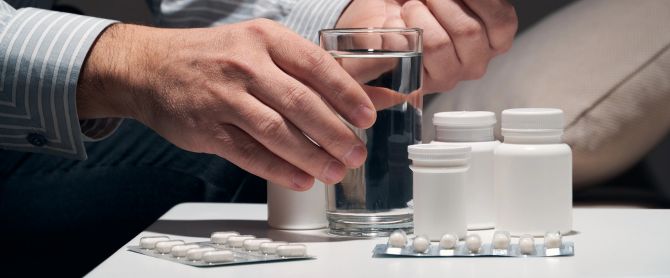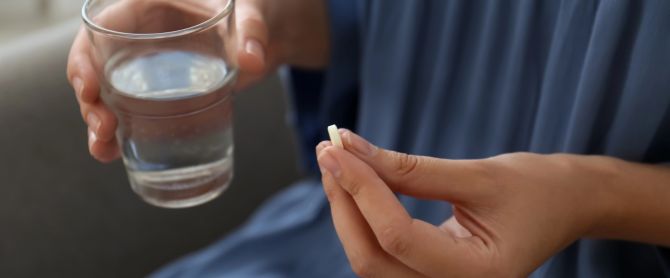Opioid addiction affects millions of individuals and families in the United States. Safe treatment options give people the chance to reclaim their lives and start fresh. Recovery is possible, and the right support can make all the difference.
Questions Answered in This Article:
- How Opioid Addiction Develops
- Triggers Of Opioid Addiction And Misuse
- How To Spot Opioid Addiction
- The Immediate And Lasting Effects Of Opioid Misuse
- Opioid Withdrawal Management Through Medical Detox
- Understanding The U.S. Opioid Crisis
- Effective Opioid Addiction Treatment You Can Trust
If you or a loved one is struggling, don’t wait.
Safe and effective treatment for opioid addiction is available.
How Opioid Addiction Develops
Opioids are a class of drugs that include prescription painkillers such as oxycodone, hydrocodone, morphine, fentanyl, and heroin. These drugs are commonly for pain management. However, they carry a high risk of opioid abuse.
The addictive nature of opioids lies in the way they affect the brain. They release large amounts of dopamine. It creates intense feelings of pleasure and relaxation.
Over time, the brain becomes dependent on opioids to function normally. This makes it difficult for individuals to stop using without help.
Fast acting opioids include fentanyl, heroin, hydromorphone (IV), oxycodone IR, morphine (IV), and codeine IR. Their quick onset makes them effective for acute pain. They also have misuse and overdose risks.
Slow-acting opioids include Buprenorphine/Naltrexone, buprenorphine, ER morphine, ER oxycodone, ER hydromorphone, and fentanyl patches. They act more gradually, last longer, and are generally safer for long-term management.
Learn how opioids effect your brain and body.
Start understanding your risk today.
Triggers of Opioid Addiction and Misuse
Opioid addiction often begins with legitimate medical use. However, prolonged use increases the risk of substance use disorders. Opioid misuse, such as taking higher doses than prescribed, can quickly escalate to addiction.
Other risk factors include genetics, mental health conditions, stress, trauma, and exposure to environments where drug use is common. Recognizing these risks is key to prevention and early intervention.
Recognize risk factors early.
Talk to a professional about prevention and treatment.
How to Spot Opioid Addiction
Spotting the warning signs of opioid addiction can help save lives. Some common symptoms include:
- Cravings for opioids
- Taking more than prescribed or running out early
- Withdrawal symptoms when not using
- Changes in mood, sleep, or behavior
- Neglecting responsibilities at work, school, or home
- Continuing use despite negative consequences
Spot the warning signs?
Seek the help now for safer recovery options.
The Immediate and Lasting Effects of Opioid Misuse
Opioid use can cause immediate effects such as drowsiness, confusion, constipation, slowed breathing, and euphoria. These may seem manageable. But short-term misuse can lead to overdose.
Long-term opioid abuse is far more damaging. It can lead to chronic constipation, hormonal imbalances, weakened immune function, memory problems, and severe dependence. The most dangerous risk is fatal overdose. This has tragically contributed to the U.S. opioid epidemic.
Protect your health.
Explore treatment programs to prevent lasting damage.
Opioid Withdrawal Management Through Medical Detox
When someone stops using opioids, withdrawal symptoms usually appear within 6–12 hours after the last dose. These opioid withdrawal symptoms may include anxiety, sweating, nausea, diarrhea, body aches, and insomnia.
Withdrawal from opioids is rarely life threatening. However, it can be extremely uncomfortable and may drive individuals back to opioid use.
Medical opioid detox provides a safe environment for the management of withdrawal to ease discomfort. It also stabilizes vital signs, and reduces cravings.
Medications for opioid use disorder moud refer to FDA-approved medicines for the treatment of opioid use disorder (OUD). OUD is a condition where someone becomes dependent on opioids.
Don’t face withdrawal alone.
Get professional detox support today.
Understanding the U.S. Opioid Crisis
Opioid misuse remains one of the most urgent public health challenges in the nation. According to the National Institute on Drug Abuse (NIDA), more than 3 million Americans have experienced opioid use disorder (OUD). In 2021, overdose deaths were at 80,000.
According to the 2021 National Survey on Drug Use and Health (NSDUH), approximately 1.8% of individuals aged 12 or older ( about 5 million people) had a prescription opioid use disorder in the past year. Prescription opioids like Percocet, oxycodone, and tramadol contribute significantly to these numbers.
These figures underscore the severity of the opioid crisis. It also highlights the importance of continued efforts in health care, prevention, treatments for opioids, and education to address opioid misuse and its associated risks.
The numbers are alarming.
Take action and find professional opioid addiction treatment now.
Effective Opioid Addiction Treatments You Can Trust
How do you treat opioid use disorder? Several safe and effective opioid treatment options are available. An opioid use program should match an individual’s needs:
- Medication-Assisted Treatment (MAT): Medications for opioid use disorder such as buprenorphine, Buprenorphine/Naltrexone, and naltrexone help reduce cravings and withdrawal symptoms.
- Behavioral Therapy: Cognitive-behavioral therapy (CBT), contingency management, and counseling address the psychological side of addiction.
- Inpatient Rehab: Provides 24/7 care in a structured environment.
- Outpatient Programs: Allow flexibility while receiving therapy and support.
- Support Groups: Programs like Narcotics Anonymous (NA) provide peer encouragement.
Combining opioid recovery programs and community support often yields the best outcomes.
Find a personalized detox plan.
Combine medication, therapy, and structured support.
Begin Your Road to Opioid Addiction Recovery
Opioid addiction is a serious but treatable condition. Finding treatment is the most effective way to overcome dependence.
The Hope House offers comprehensive and evidence- based treatment programs to suit your needs. Our compassionate team offers medically supervised detox, ongoing therapy for sustained recovery.
If you or a loved one is struggling with opioid addiction, The Hope House offers comprehensive and evidence- based treatment programs tailored to your needs. Our compassionate team offers medically supervised detox, ongoing therapy for sustained recovery.
Don’t wait—take the first step toward a healthier, drug-free life today. Contact The Hope House now and begin your journey to freedom from opioid addiction.






